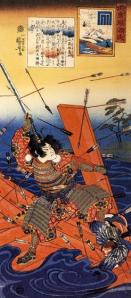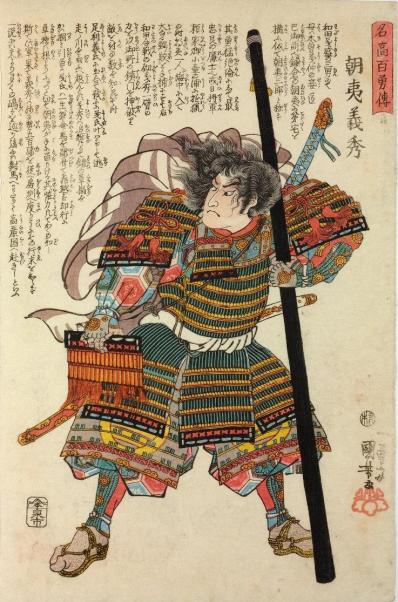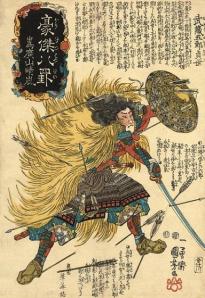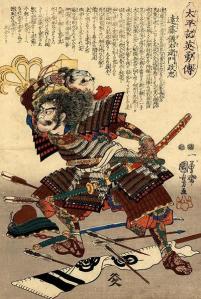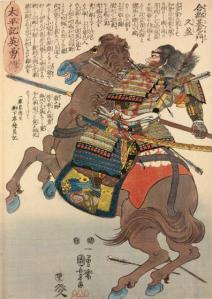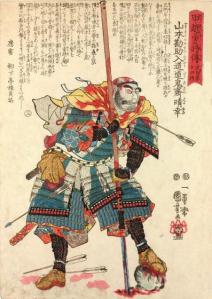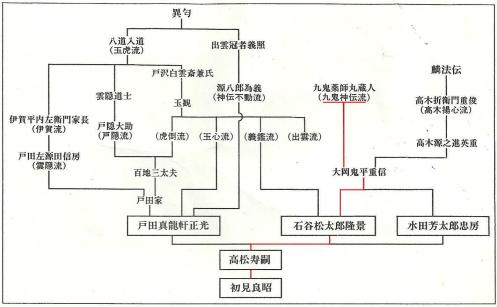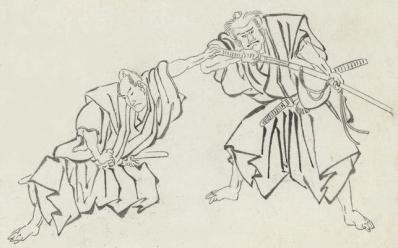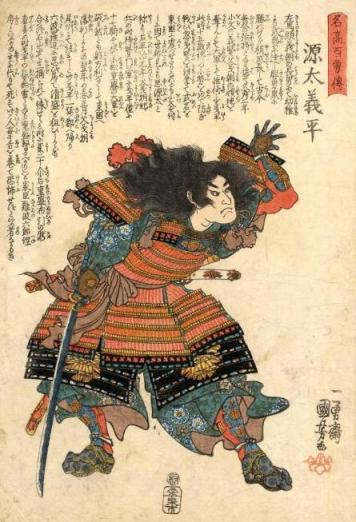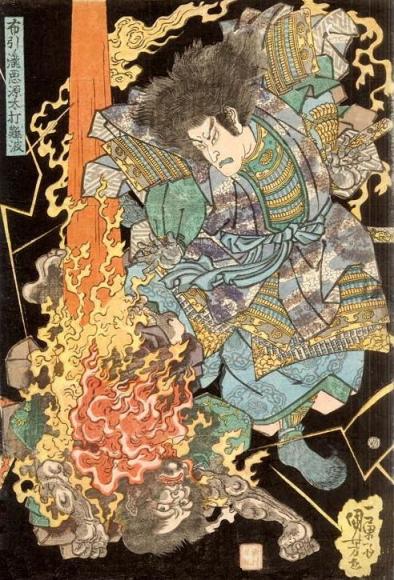From Blog – Bujinkan Kokusai Renkoumyo 武神館國際連光明道場 by bkronline
Many have been asking me when the Togakure Ryu history book that includes the information about Toda will be ready. Honestly, I am slightly behind schedule due to several long business trips with my day job but I still plan to be finished with the rewriting and editing by the end of May. So, if things go really well I may have copies at the end of May. But at the latest, I should have everything ready in June.
I am also opening a new website in conjunction with the book to promote the BKR Dojo’s new member’s only content. I will still always be writing and posting for free here on Facebook but this will be for my personal students and for those who want more in-depth videos and articles along with the chance to earn rank in the BKR syllabus created by myself and approved by Hatsumi Soke and Noguchi Dai-Shihan in 2001. There will be monthly live training webinars included for members. All for the low cost of $9 per month.
But for now, here is another part of Soke’s new Taijutsu book that I thought deserved translation…
Koppojutsu and Taihenjutsu
From Kamae to tactical application
The Root Principles of the Bujinkan Martial Arts
It is Taihenjutsu (大変術), not to mention, that is the root of all of the Bujinkan’s techniques. Here is where you pull off all the strikes, joint locks and throws. It is the same if performing unarmed Taijutsu (体術) fighting techniques or with Bukijutsu (武器術) weapons techniques. I think many of you have already come to understand this now. In this essay I will return to the origins, and explain in detail this basic point that should be called the Bujinkan’s root principle technique.
The Koppojutsu mentioned in the above title is referring to one of the core styles of the Bujinkan system, the Koto Ryu Koppojutsu. When generally referring to Koppo (骨法), many people may have the image of striking techniques in their mind but in the old schools of Jujutsu, a fist (拳) did not always mean a hand held in a closed fist. Just the same, Koppo does not always equal striking techniques. It is certain that striking skills are an important part of the Koto Ryu and there are striking based techniques in the style such as Yokuto and Setto. But not limited to only that, there are throws, as in the form Hoteki, and there are also joint lock techniques and muscle grabbing techniques in the style. But what all forms have in common is that you move with the legs in an X pattern to approach and attach yourself to the opponent while applying the techniques. Each technique has an established theme and then with these forms as a base, various elements are added. Therefore, even with throwing techniques, various types of techniques will be used in combination. For example, Hoteki is reverse-over the shoulder throw versus a grab to the chest. But at the moment when the opponent’s body floats up from the reverse lock on the elbow, a pressure point grabbing technique is applied in combination to the points in the opponent’s arm. Depending on the flow of situation you can also strike the pressure point called Jakkin on the inside of the bicep rendering it unable to resist the technique.
Also, the form Setto is a technique versus a grab to the chest using a type of fist called Shikanken. This fist is formed by half closing your normal fist and striking the opponent’s Jakkin with the second joints of the four fingers, followed by a thumb strike from the other hand to the floating ribs. At first glance it seems like a very simple technique but from this point many variations including various throws, joint locks and grabbing techniques are included. The theme of this technique and the secret to its application are important elements. Therefore, as I have expounded “Koppo” means the knack or the gist of how to apply the techniques.
Along with the Koto Ryu, the Gyokko Ryu Koshijutsu is another of the core arts of the Bujinkan. Koshijutsu is said to mean the “essentials” of all martial arts (the mother of all martial arts). Here the use of the Kanji character for bone in the “Ko” part of “koshi” is used to imply as always, the root principles or the theme of the art. The use of this character is not simply just a pun, it is meant to impart a deep feeling.
The birth of a technique…【Kamae 構え】
In this essay, to analyze the fundamental parts of the Koto Ryu, I will explain the basic Kamae and their usage. I have said many times that Kamae is the birth or the beginning of a technique and not a fighting pose. But I think that it will be even more clear if we look at the photographic explanations. From these Kamae, I’d like you to understand how to use Taihenjutsu to deal with your opponent’s attacks.
In the Koto Ryu, Kamae is called Kurai Dori (位取) and this term shows that it contains various feints, variations and counters. Essentially all the elements of the martial arts are contained in the Kamae.
Here I will explain Seigan no Kamae (正眼の構え), Hira Ichimonji no Kamae (平一文字の構え), Houko no Kamae (抱圍の構) and Boubi no Kamae (防備の構え). But of these four the most basic is Seigan no Kamae. As you can see in the picture, in this posture you turn to the side and lower the hips while both arms are directed towards the centerline of your opponent. From this Kamae the basic body movement is while the lead arm becomes the axis and the body evades the attack to the left or to the right. By doing this you can evade the enemy’s line of offense and be in a position that is advantageous for the battle, and if you have a weapon in your hand you can still move in this same way. Hira Ichimonji no Kamae will probably give the strangest impression…
Specifically, move from Seigan no Kamae to evade the line of attack by moving the body to the side where you can counterattack immediately. Or you can turn your body sideways to avoid the line of attack to the inside or the outside, immediately spreading both hands forcefully to hit the opponent’s face with the back of the hand or palm (this position is Hira Ichimonji no Kamae). At the time of avoiding the attack by turning to the side and flattening out, do it just like trying to squeeze through a crowd. By opening both arms out. During this movement it is possible to be completely flattened out. There is also the meaning of complementing the movement of the front hand with the with symmetrical arm movement of the backhand. The raised leg is meant for kicking and hooking, and everything is prepared to be useful for battle with no waste. In addition, spreading both hands to the left and right and keeping both feet flat on the floor while dropping their waist is called Hira no Kamae.
Widely applicable…【Kamae 構え】
To do Houko no Kamae face your body to the front and raise both hands up and in front of you. The knack of this is to keep your hands and arms up like you are wrapping up or absorb your opponent into your arms and body. Both hands can be used for offense or defense. It is a very easy Kamae to use in actual battle and is used for facing a swordsman while unarmed. While Seigan no Kamae leads to the sword, staff, spear, etc. this Houko no Kamae is the basic stance of using secret weapons like the Tekagi (手鉤) or “hand claws”. As for this, I would like to explain more, in addition to the Tekagi, there are also many techniques including dangerous weapons such as the “ring spike” or Kakushi (角指) and “iron fists” or Tekken (鉄拳). There are even knife fighting techniques as well. But regarding these, I wish to avoid from putting on paper the techniques that are regarded as dangerous.
If you are seeking real training head to the door of your nearest Bujinkan Dojo.
Hatsumi Masaaki
Ninjutsu Kyoden (忍術教伝) 2018
Text: Pages 94 ~ 96
Photos: Pages 98 ~ 103
Translated by
Sean Askew
Bujinkan Kokusai Renkoumyo
5/1/2018
Let’s know in the comments. Please, if like what we are doing, click “Like,” “Fellow”, give us “Feedback” “comments,“ and get a notification about a new post.…





 He was very excited about the finds and insisted that I get everything translated over into Japanese for him right away.
He was very excited about the finds and insisted that I get everything translated over into Japanese for him right away.